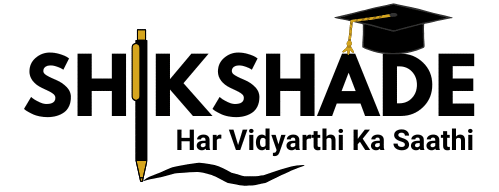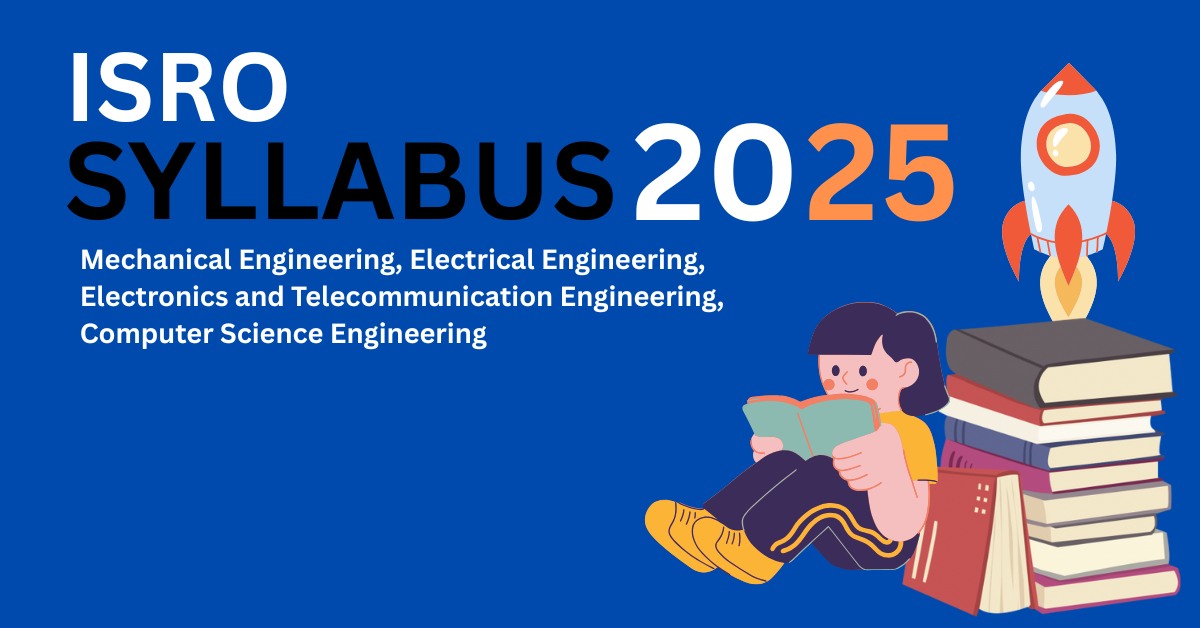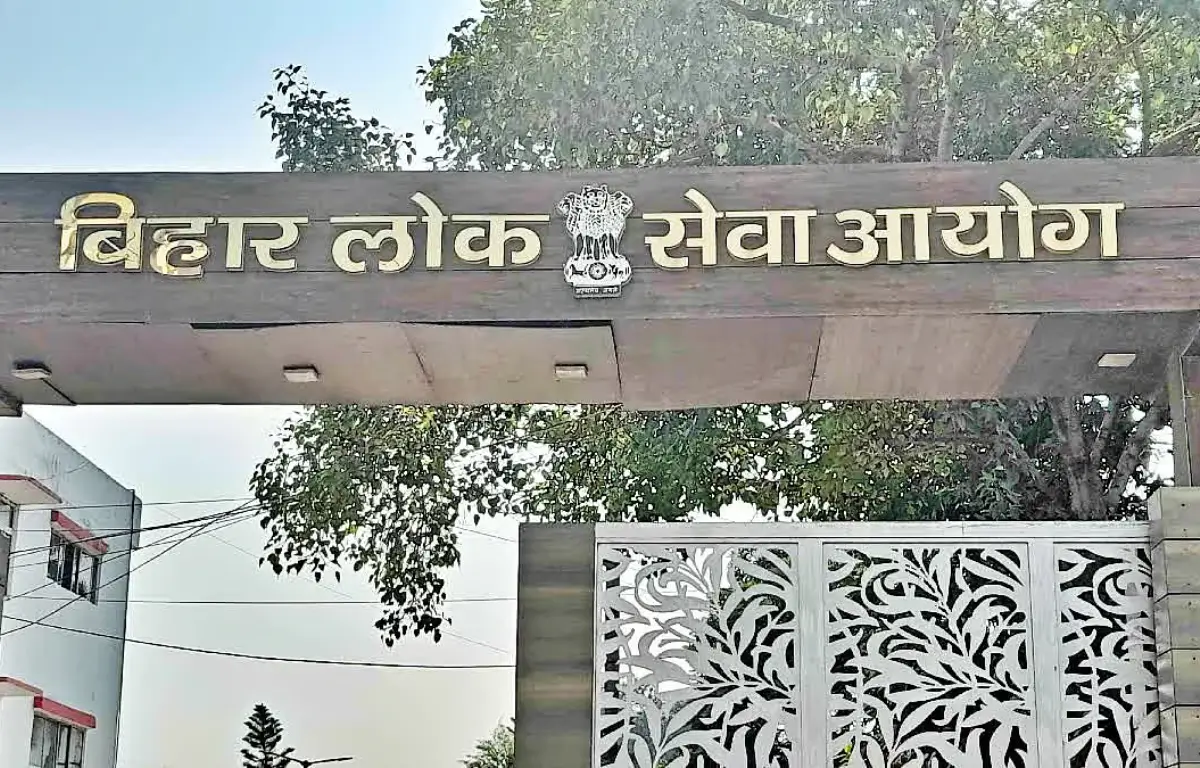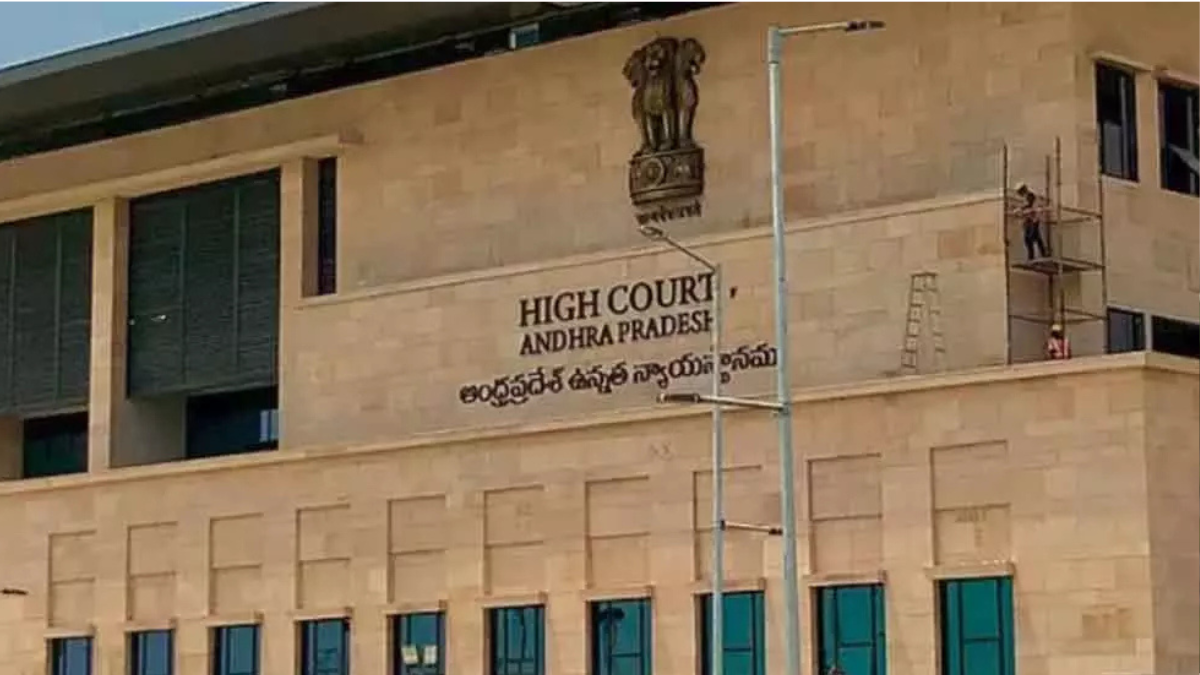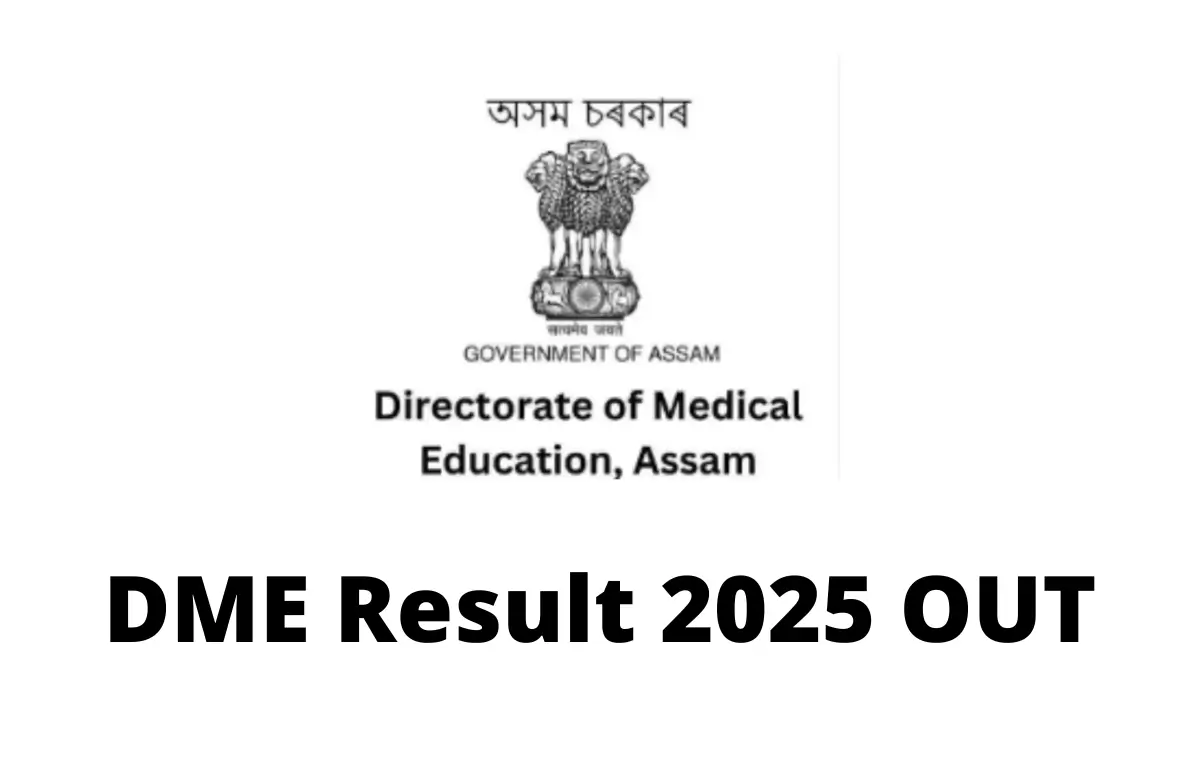The Indian Space Research Organization (ISRO) has announced 300 job openings for the position of Scientist/Engineer on its official website, www.isro.gov.in. If you’re planning to apply, it’s crucial to familiarize yourself with the ISRO Syllabus 2025. This article provides a detailed overview of the syllabus and exam pattern for 2025. Be sure to read the full article for all the necessary information and bookmark this page for updates on the latest engineering job notifications.
ISRO Syllabus 2025
ISRO is one of India’s largest organizations, regularly hiring scientists and engineers. With 300 job openings for the Scientist/Engineer position, ISRO has released an official notification. To help candidates prepare effectively, we’ve outlined a summary of the ISRO Syllabus 2025 and Exam Pattern. Review the detailed subject-wise ISRO ICRB Syllabus provided in this article to aim for the highest marks in the upcoming ISRO Recruitment 2025.
| ISRO ICRB Syllabus 2025 | |
| Organization | Indian Space Research Organization (ISRO) |
| Post Name | Scientist/Engineer |
| Number of Vacancies | 300 |
| ISRO Syllabus | Available Here |
| Selection Process | Written Test and Interview |
| Official Website | www.isro.gov.in |
ISRO Exam Pattern 2025
Candidates preparing for the ISRO Exam 2025 should have a clear understanding of the exam pattern. It serves as a guide to the question paper, outlining essential details like the number of questions, total marks, exam duration, and the presence of negative marking.
- Total Questions: 80 objective-type questions from specific technical disciplines and 15 questions from General Aptitude.
- Exam Duration: 120 minutes.
- Negative Marking: 1/3 mark will be deducted for incorrect answers in Part A only.
Understanding this exam pattern will help candidates to prepare effectively for the ISRO Scientist/Engineer Exam 2025.
| Stages/Paper | Name of Subject | Number of Questions | Marks | Time Duration |
| Written Test (Part A) | Area/Discipline Specific part | 80 | 80 | 120 Minutes |
| Written Test (Part B) | Aptitude/Ability Tests | 15 | 20 | |
| Total | 95 | 100 | ||
| Interview | Technical (Academic) Knowledge | Not Disclosed | 40 | Not Disclosed |
| General Awareness in relevance to the area of Specialization (Technical) |
20 | |||
| Presentation/Communication Skills | 20 | |||
| Comprehension | 10 | |||
| Academic Achievements | 10 | |||
| Total | 100 | |||
ISRO Detailed Syllabus 2025
The ISRO Exam, conducted by the Indian Space Research Organization, is designed to select the best candidates for the Scientist/Engineer position. The exam will consist of 95 questions, covering both technical subjects and general aptitude. Below is the detailed subject-wise syllabus for the ISRO Exam 2025, which includes the full syllabus for various topics.
- Mechanical Engineering
- Electrical Engineering
- Electronics and Telecommunication Engineering
- Computer Science Engineering
Candidates are encouraged to read the article for a complete and detailed syllabus for each engineering branch. For future updates and recruitment information, it’s also a good idea to bookmark this page.
ISRO Mechanical Engineering Syllabus 2025
Engineering Mechanics
- Free-body diagrams and equilibrium
- Friction and its applications (e.g., rolling friction, belt-pulley systems, brakes, clutches, screw jacks, vehicles)
- Trusses and frames
- Virtual work
- Kinematics and dynamics of rigid bodies in plane motion
- Impulse and momentum (linear and angular) and energy formulations
- Lagrange’s equation
Mechanics of Materials
- Stress, strain, elastic constants, Poisson’s ratio
- Mohr’s circle for plane stress and plane strain
- Thin cylinders
- Shear force and bending moment diagrams
- Bending and shear stresses
- Concept of shear center
- Deflection of beams, torsion of circular shafts
- Euler’s theory of columns
- Energy methods and thermal stress
- Strain gauges, material testing (universal testing machine, hardness, impact strength)
Theory of Machines
- Displacement, velocity, and acceleration analysis of plane mechanisms
- Dynamic analysis of linkages, cams, gears, gear trains, flywheels, and governors
- Balancing of reciprocating and rotating masses
- Gyroscope
Vibrations
- Free and forced vibrations of single-degree-of-freedom systems
- Effects of damping, vibration isolation
- Resonance and critical speeds of shafts
Machine Design
- Design for static and dynamic loading
- Failure theories, fatigue strength, and S-N diagram
- Principles of designing machine elements (bolted, riveted, and welded joints; shafts, gears, bearings, brakes, clutches, springs)
This detailed syllabus will help you prepare thoroughly for the ISRO Exam 2025 in Mechanical Engineering.
ISRO Syllabus 2025: Fluid Mechanics, Heat Transfer, and Thermodynamics
Fluid Mechanics
- Fluid properties
- Fluid statics, forces on submerged bodies, stability of floating bodies
- Control-volume analysis of mass, momentum, and energy
- Fluid acceleration, differential equations of continuity and momentum
- Bernoulli’s equation, dimensional analysis
- Viscous flow of incompressible fluids, boundary layer theory
- Elementary turbulent flow, flow through pipes, head losses in pipes, bends, and fittings
- Basics of compressible fluid flow
Heat Transfer
- Modes of heat transfer
- One-dimensional heat conduction, resistance concept, and electrical analogy
- Heat transfer through fins, unsteady heat conduction, lumped parameter system
- Heisler’s charts
- Thermal boundary layer and dimensionless parameters in convective heat transfer
- Heat transfer correlations for flow over flat plates and through pipes
- Effect of turbulence, heat exchanger performance (LMTD and NTU methods)
- Radiative heat transfer, Stefan-Boltzmann law, Wien’s displacement law
- Black and grey surfaces, view factors, and radiation network analysis
Thermodynamics
- Thermodynamic systems and processes
- Properties of pure substances and behavior of ideal and real gases
- Zeroth and first laws of thermodynamics, calculation of work and heat in various processes
- Second law of thermodynamics, thermodynamic property charts, and tables
- Availability and irreversibility, thermodynamic relations
Applications
- Power Engineering: Air and gas compressors, vapor and gas power cycles, concepts of regeneration and reheat
- I.C. Engines: Air-standard Otto, Diesel, and dual cycles
- Refrigeration and Air-conditioning: Vapor and gas refrigeration and heat pump cycles, properties of moist air, psychrometric chart, basic psychrometric processes
- Turbomachinery: Impulse and reaction principles, velocity diagrams, Pelton-wheel, Francis and Kaplan turbines, steam and gas turbines
This comprehensive syllabus will guide your preparation for the ISRO Exam 2025 in fluid mechanics, heat transfer, and thermodynamics.
ISRO Syllabus 2025: Engineering Materials, Manufacturing Processes, and Production
Engineering Materials
- Structure and properties of engineering materials
- Phase diagrams, heat treatment processes
- Stress-strain diagrams for engineering materials
Casting, Forming, and Joining Processes
- Types of castings, design of patterns, molds, and cores
- Solidification and cooling processes, riser and gating design
- Plastic deformation, yield criteria
- Hot and cold working processes (forging, rolling, extrusion, drawing)
- Sheet metal forming processes (shearing, deep drawing, bending)
- Principles of powder metallurgy
- Welding, brazing, soldering, and adhesive bonding techniques
Machining and Machine Tool Operations
- Mechanics of machining, basic machine tools
- Single and multi-point cutting tools, tool geometry, and materials
- Tool life and wear, economics of machining
- Principles of non-traditional machining processes
- Work holding, jigs, and fixtures
- Abrasive machining processes, NC/CNC machines, and CNC programming
Metrology and Inspection
- Limits, fits, and tolerances
- Linear and angular measurements, comparators, and interferometry
- Form and finish measurement, alignment, and testing methods
- Tolerance analysis in manufacturing and assembly
- Concepts of Coordinate Measuring Machine (CMM)
Computer-Integrated Manufacturing
- Basic concepts of CAD/CAM and integration tools
- Additive manufacturing principles
Production Planning and Control
- Forecasting models and aggregate production planning
- Scheduling, materials requirement planning
- Lean manufacturing principles
Inventory Control
-
Deterministic models and safety stock inventory control systems
Operations Research
- Linear programming, simplex method
- Transportation, assignment, and network flow models
- Simple queuing models, PERT, and CPM
This syllabus provides a comprehensive guide to Engineering Materials, Manufacturing Processes, and Production topics for the ISRO Exam 2025.
ISRO Syllabus 2025: Structural Engineering and Construction Management
Engineering Mechanics
- Systems of forces, free-body diagrams, and equilibrium equations
- Internal forces in structures
- Friction and its applications
- Centre of mass
- Free vibrations of undamped single-degree-of-freedom (SDOF) systems
Solid Mechanics
- Bending moment and shear force in statically determinate beams
- Stress and strained relationships
- Simple bending theory, flexural and shear stresses
- Shear center, uniform torsion, and stress transformation
- Buckling of columns, combined with direct bending stresses
Structural Analysis
- Analysis of statically determinate and indeterminate structures using force/energy methods
- Method of superposition
- Analysis of trusses, arches, beams, cables, and frames
- Displacement methods: Slope deflection and moment distribution
- Influence lines, stiffness, and flexibility methods of structural analysis
Construction Materials and Management
-
Construction Materials:
-
Structural Steel: Composition, material properties, and behavior
-
Concrete: Constituents, mix design, short-term and long-term properties
-
-
Construction Management:
-
Types of construction projects
-
Project planning and network analysis (PERT and CPM)
-
Cost estimation
-
Concrete Structures
- Work stress and limit state design concepts
- Design of beams, slabs, columns
- Bond and development length
- Prestressed concrete beams
Steel Structures
- Work stress and limit state design concepts
- Design of tension and compression members, beams, beam-columns, and column bases
- Connections: Simple and eccentric, beam-column connections, plate girders, and trusses
- Concept of plastic analysis (beams and frames)
This syllabus will help guide your preparation for the ISRO Exam 2025 in Structural Engineering and Construction Management topics. For more detailed information, you can refer to the official syllabus.
ISRO Syllabus 2025: Geotechnical Engineering
Soil Mechanics
- Three-phase system, phase relationships, and index properties
- Unified and Indian standard soil classification system
- Permeability: One-dimensional flow, seepage through soils (two-dimensional flow), flow nets, uplift pressure, piping, capillarity, and seepage force
- Principles of effective stress, quicksand condition
- Compaction of soils, one-dimensional consolidation, and the time rate of consolidation
- Shear strength: Mohr’s circle, effective and total shear strength parameters
- Stress-strain characteristics of clays and sands, stress paths
Foundation Engineering
- Sub-surface investigations: Drilling boreholes, sampling, plate load tests, standard penetration tests, and cone penetration tests
- Earth pressure theories: Rankine and Coulomb
- Stability of slopes: Finite and infinite slopes, Bishop’s method.
- Stress distribution in soils: Boussinesq’s theory and pressure bulbs.
- Shallow foundations: Terzaghi’s and Meyerhoff’s bearing capacity theories, effect of the water table, combined footing, and raft foundation.
- Contact pressure and settlement analysis: Analysis in sands and clays.
- Deep foundations: Dynamic and static formulae, axial load capacity of piles in sands and clays, pile load test, pile under lateral loading, pile group efficiency, negative skin friction.
This syllabus will help you to prepare effectively for the ISRO Exam 2025 in Geotechnical Engineering.
ISRO Syllabus 2025: Geotechnical Engineering
Soil Mechanics
- Three-phase system, phase relationships, and index properties
- Unified and Indian standard soil classification system
- Permeability: One-dimensional flow, seepage through soils (two-dimensional flow), flow nets, uplift pressure, piping, capillarity, and seepage force
- Principles of effective stress, quicksand condition
- Compaction of soils, one-dimensional consolidation, and the time rate of consolidation
- Shear strength: Mohr’s circle, effective and total shear strength parameters
- Stress-strain characteristics of clays and sands, stress paths
Foundation Engineering
- Sub-surface investigations: Drilling boreholes, sampling, plate load tests, standard penetration tests, and cone penetration tests
- Earth pressure theories: Rankine and Coulomb
- Stability of slopes: Finite and infinite slopes, Bishop’s method
- Stress distribution in soils: Boussinesq’s theory and pressure bulbs
- Shallow foundations: Terzaghi’s and Meyerhoff’s bearing capacity theories, effect of the water table, combined footing, and raft foundation
- Contact pressure and settlement analysis: Analysis in sands and clays
- Deep foundations: Dynamic and static formulae, axial load capacity of piles in sands and clays, pile load test, pile under lateral loading, pile group efficiency, negative skin friction
This syllabus will help you to prepare effectively for the ISRO Exam 2025 in Geotechnical Engineering.
ISRO Syllabus 2025: Fluid Mechanics, Hydraulics, Hydrology, and Irrigation
Fluid Mechanics
- Properties of fluids, fluid statics
- Continuity, momentum, and energy equations and their applications
- Potential flow, laminar, and turbulent flow
- Flow in pipes, pipe networks
- Concept of boundary layer and its growth
- Lift and drag concepts
Hydraulics
- Forces on immersed bodies
- Flow measurement in channels and pipes
- Dimensional analysis and hydraulic similitude
- Channel hydraulics: Energy-depth relationships, specific energy, critical flow, hydraulic jumps, uniform flow, gradually varied flow, and water surface profiles
Hydrology
-
Hydrologic cycle: Precipitation, evaporation, evapotranspiration
-
Watershed, infiltration, unit hydrographs, hydrograph analysis
- Reservoir capacity and flood estimation and routing
- Surface runoff models
- Groundwater hydrology: Steady state well hydraulics, aquifers
- Application of Darcy’s Law
Irrigation
- Types of irrigation systems and methods
- Crop water requirements: Duty, delta, and evapotranspiration
- Gravity dams and spillways
- Lined and unlined canals
- Design of weirs on permeable foundations
- Cross-drainage structures
This section provides an overview of Fluid Mechanics, Hydraulics, Hydrology, and Irrigation, which are crucial topics for the ISRO Exam 2025 in Civil Engineering.
ISRO Environmental and Transportation Engineering Syllabus 2025
Water and Wastewater Quality and Treatment
- Basics of water quality standards: Physical, chemical, and biological parameters
- Water Quality Index
- Unit processes and operations in water treatment
- Water requirements and distribution systems
- Drinking water treatment processes
- Sewerage System Design: Quantity of domestic wastewater, primary and secondary treatment
- Effluent discharge standards, sludge disposal, and reuse of treated sewage for various applications
Air Pollution
- Types of pollutants, their sources, and impacts
- Air pollution control techniques
- Air Quality Standards and Air Quality Index (AQI)
- Limits on pollutant concentrations
Municipal Solid Waste
- Characterization, generation, collection, and transportation of solid wastes
- Engineered systems for solid waste management (reuse/recycle, energy recovery, treatment, and disposal)
Transportation Engineering
Transportation Infrastructure
- Geometric design of highways: Cross-sectional elements, sight distances, horizontal and vertical alignments
- Geometric design of railway tracks: Speed and cant
- Airport runway length, calculations, and corrections
- Taxiway and exit taxiway design
Highway Pavements
- Highway materials: Desirable properties and tests
- Desirable properties of bituminous paving mixes
- Design factors for flexible and rigid pavements
- Pavement design using IRC codes
Traffic Engineering
- Traffic studies: Flow, speed, peak hour factors, and accident studies
- Statistical analysis of traffic data
- Microscopic and macroscopic parameters of traffic flow
- Traffic signs and signal design using Webster’s method
- Types of intersections and highway capacity
This section highlights key topics in Water and Wastewater Treatment, Air Pollution, Municipal Solid Waste Management, and Transportation Engineering for the ISRO Exam 2025 in Civil Engineering.
ISRO Geomatics Engineering and Electrical Engineering Syllabus 2025
Geomatics Engineering
Principles of Surveying:
- Errors in surveying and their adjustments
- Maps: scale and coordinate systems
- Distance and angle measurements: levelling and trigonometric levelling
- Traversing and triangulation surveys
- Use of Total Stations
- Horizontal and vertical curves
Photogrammetry and Remote Sensing:
- Scale and flying height
- Basics of remote sensing and GIS (Geographic Information Systems)
ISRO Syllabus for Electrical Engineering
Electric Circuits:
- Network elements: Ideal voltage/current sources, dependent sources, R, L, C, and M elements
- Network solution methods: KCL, KVL, Node, and Mesh analysis
- Network Theorems: Thevenin’s, Norton’s, Superposition, and Maximum Power Transfer
- Transient response of DC and AC networks
- Resonance and two-port networks
- Balanced three-phase circuits and star-delta transformations
- Complex power and power factor in AC circuits
Electromagnetic Fields:
- Coulomb’s Law, Electric Field Intensity, Electric Flux Density, Gauss’s Law
- Electric field and potential due to various charge distributions
- Capacitance of simple configurations
- Biot-Savart’s Law, Ampere’s Law, Curl, Faraday’s Law, Lorentz force
- Inductance and Magnetomotive Force
- Magnetic Circuits and Self/Mutual Inductance
Signals and Systems:
- Representation of continuous and discrete time signals
- Linear time-invariant (LTI) systems and Fourier series representation
- Sampling Theorem, Laplace Transform, and Z transform
- Applications of Fourier Transforms for continuous and discrete signals
- RMS value and average value calculations for periodic waveforms
Electrical Machines:
- Single-phase transformer: equivalent circuit, phasor diagram, efficiency, and regulation
- Three-phase transformers: Connections, parallel operation, and vector groups
- DC machines: Separately excited, series, and shunt motors, speed control
- Induction motors: Principle, types, performance, and torque-speed characteristics
- Synchronous machines: Performance, regulation, starting, and parallel operation
- Losses and efficiency calculations in electric machines
Power Systems:
- Basics of electrical power generation, AC/DC transmission
- Economic Load Dispatch and Transmission Line Performance
- Voltage and Frequency control, Symmetrical/Unsymmetrical fault analysis
- Circuit breakers, Protection schemes (over-current, differential)
- Power system stability concepts
Control Systems:
- Mathematical modeling, transfer functions,and feedback principles
- Transient and steady-state analysis of LTI systems
- Stability analysis (Routh-Hurwitz, Nyquist)
- Bode plots, root loci, compensators (P, PI, PID controllers)
- State-space models and solutions of state equations for LTI systems
Electrical and Electronic Measurements:
- Measurement of voltage, current, power, energy, and power factor
- Instrument transformers, digital voltmeters, and multimeters
- Phase, time, and frequency measurements using oscilloscopes
- Error analysis in measurements
Analog and Digital Electronics:
- Diode circuits: Clipping, clamping, and rectifiers
- Amplifiers: Biasing, frequency response, oscillators, feedback
- Operational amplifiers (Op-Amps): Characteristics and applications
- Active filters (Sallen Key, Butterworth), VCOs, timers
- Logic circuits: Multiplexers, demultiplexers, Schmitt triggers, A/D and D/A converters
Power Electronics:
- Thyristor, MOSFET, IGBT static V-I characteristics
- DC-DC converters: Buck, Boost, Buck-Boost converters
- AC to DC converters (controlled/uncontrolled rectifiers)
- Voltage and current source inverters, Sinusoidal PWM
This concise summary covers the core syllabus for Geomatics Engineering and Electrical Engineering in the ISRO 2025 exam, helping candidates prepare efficiently.
ISRO Electrical and Electronics Engineering Syllabus 2025
Networks, Signals, and Systems
Circuit Analysis:
- Node and mesh analysis, superposition, Thevenin’s and Norton’s theorems, reciprocity
- Sinusoidal steady-state analysis: Phasors, complex power, maximum power transfer
- Time and frequency domain analysis of linear circuits: RL, RC, RLC circuits
- Solution of network equations using the Laplace transform
- Linear 2-port network parameters, Wye-Delta transformation
Continuous-Time Signals:
- Fourier series and Fourier transform
- Sampling theorem and its applications
Discrete-Time Signals:
- Discrete-time Fourier transform (DTFT), Discrete Fourier transform (DFT), Z-transform
- Discrete-time processing of continuous-time signals
- LTI systems: Definition and properties, causality, stability, impulse response, convolution, poles and zeroes, frequency response, group delay, phase delay
Electronic Devices
Energy Bands in Semiconductors:
- Intrinsic and extrinsic semiconductors, equilibrium carrier concentration
- Direct and indirect band-gap semiconductors
Carrier Transport:
- Diffusion current, drift current, mobility, resistivity, generation, and recombination of carriers
- Poisson and continuity equations
Semiconductor Devices:
- P-N junction, Zener diode, BJT (Bipolar Junction Transistor)
- MOS Capacitor, MOSFET, LED, Photo diode, Solar cell
Analog Circuits
Diode Circuits:
- Clipping, clamping, and rectifiers
BJT and MOSFET Amplifiers:
- Biasing, AC coupling, small-signal analysis, frequency response
- Current mirrors and differential amplifiers
Op-Amp Circuits:
- Amplifiers, summers, differentiators, integrators
- Active filters, Schmitt triggers, and oscillators
Digital Circuits
Number Representations:
-
Binary, integer, and floating-point numbers
Combinatorial Circuits:
- Boolean algebra, minimization using Boolean identities, and Karnaugh maps
- Logic gates and their CMOS implementations, arithmetic circuits, and code converters
- Multiplexers, decoders
Sequential Circuits:
- Latches, flip-flops, counters, shift registers, and finite state machines
- Propagation delay, setup/hold time, and critical path delay
Data Converters:
-
Sample and hold circuits, ADCs (Analog to Digital Converters), DACs (Digital to Analog Converters)
Semiconductor Memories:
-
ROM, SRAM, DRAM
Computer Organization:
- Machine instructions, addressing modes, ALU (Arithmetic Logic Unit), data-path, control unit
- Instruction pipelining
Control Systems
Basic Control System Components:
- Feedback principle, transfer function, block diagram representation
- Signal flow graph, transient and steady-state analysis of LTI systems
- Frequency response, Routh-Hurwitz, and Nyquist stability criteria
- Bode and root-locus plots, lag, lead, and lag-lead compensation
- State variable models and solutions of state equations for LTI systems
Communications
Random Processes:
-
Autocorrelation, power spectral density, and white noise properties
-
Filtering of random signals through LTI systems
Analog Communications:
-
Amplitude modulation (AM) and demodulation, angle modulation (FM/PM)
-
Spectra of AM and FM superheterodyne receivers
Information Theory:
-
Entropy, mutual information, channel capacity theorem
Digital Communications:
- PCM (Pulse Code Modulation), DPCM (Differential PCM), digital modulation schemes (ASK, PSK, FSK, QAM)
- Bandwidth, inter-symbol interference, MAP, ML detection, matched filter receiver
- SNR (Signal-to-Noise Ratio) and BER (Bit Error Rate)
- Error correction: Hamming codes, CRC (Cyclic Redundancy Check)
Electromagnetics
Maxwell’s Equations:
- Differential and integral forms and boundary conditions
- Wave equation, Poynting vector
Plane Waves and Their Properties:
- Reflection and refraction, polarization, phase, and group velocity
- Propagation through various media and skin depth
Transmission Lines:
- Equations, characteristic impedance, impedance matching, impedance transformation
- S-parameters, Smith chart
Waveguides and Antennas:
- Rectangular and circular waveguides
- Light propagation in optical fibers
- Dipole and monopole antennas, linear antenna arrays
This summary covers key topics for Electrical and Electronics Engineering in the ISRO 2025 exam, offering a streamlined understanding of core subjects ranging from signal processing and circuit theory to electromagnetics and communications.
ISRO Computer Science and Engineering Syllabus 2025
Digital Logic
- Boolean Algebra: Basic operations, laws, and simplifications
- Combinational Circuits: Logic gates, multiplexers, decoders, encoders, adders, subtractors, and comparators
- Sequential Circuits: Flip-flops, counters, registers, and finite state machines
- Minimization: Karnaugh maps, Quine–McCluskey method
- Number Representations: Binary, octal, hexadecimal, and conversions
- Computer Arithmetic: Fixed-point and floating-point representations
Computer Organization and Architecture
-
Machine Instructions and Addressing Modes:
-
Types of instructions and formats (RISC, CISC)
-
Addressing modes (direct, indirect, indexed, register)
-
-
ALU (Arithmetic Logic Unit), Data-path, and Control Unit:
-
ALU operations, data-path architecture, and control signals
-
-
Instruction Pipelining:
-
Pipelined execution and pipeline hazards (data, control, structural)
-
-
Memory Hierarchy:
-
Cache memory, main memory, secondary storage (disks, SSDs)
-
Memory access time, cache organization, and management
-
-
I/O Interface:
-
Interrupts, Direct Memory Access (DMA), and I/O systems design
-
Programming and Data Structures
-
Programming in C:
-
Data types, operators, control structures (if, loops), functions, pointers, arrays, structures, file handling
-
-
Recursion:
-
Recursive functions and stack unwinding
-
-
Data Structures:
-
Arrays: Linear and multi-dimensional arrays
-
Stacks and Queues: Implementation and applications (e.g., parsing)
-
Linked Lists: Singly, doubly, and circular linked lists
-
Trees: Binary trees, binary search trees, AVL trees, heaps, B-trees
-
Graphs: Representation (adjacency matrix/list), DFS, BFS
-
Algorithms
-
Searching and Sorting Algorithms:
-
Linear and binary search, selection sort, bubble sort, insertion sort, merge sort, quick sort, heap sort
-
-
Hashing:
-
Hash functions, collision resolution methods (open addressing, chaining)
-
-
Asymptotic Complexity:
-
Time and space complexity (Big O, Big Ω, Big Θ)
-
-
Algorithm Design Techniques:
-
Greedy Algorithms: Activity selection, Huffman coding
-
Dynamic Programming: Matrix-chain multiplication, knapsack problem, longest common subsequence
-
Divide-and-Conquer: Merge sort, quicksort, binary search
-
-
Graph Algorithms:
-
Traversals: DFS, BFS
-
Minimum Spanning Tree (MST): Prim’s, Kruskal’s
-
Shortest Path: Dijkstra’s, Bellman-Ford, Floyd-Warshall
-
Theory of Computation
-
Regular Expressions and Finite Automata:
-
NFA, DFA, equivalence, minimization of automata
-
-
Context-Free Grammars and Push-Down Automata:
-
CFG derivations, normal forms (Chomsky, Greibach)
-
-
Regular and Context-Free Languages:
-
Pumping lemma, closure properties
-
-
Turing Machines and Undecidability:
-
Turing machine definitions, halting problem, decidability
-
Compiler Design
-
Lexical Analysis:
-
Tokenization, scanners
-
-
Parsing:
-
Top-down parsing (LL), bottom-up parsing (LR), and parsing algorithms
-
-
Syntax-Directed Translation:
-
Syntax trees and semantic actions
-
-
Runtime Environments:
-
Stack, heap, symbol tables, activation records
-
-
Intermediate Code Generation:
-
Three-address code and control flow graphs
-
-
Local Optimization:
-
Constant folding, constant propagation
-
-
Data Flow Analysis:
-
Liveness analysis, reaching definitions, and available expressions
-
Operating System
-
System Calls and Processes:
-
Process creation, process control, states, and transitions
-
-
Threads and Concurrency:
-
Thread management and synchronization mechanisms (mutex, semaphore, monitors)
-
-
Inter-process Communication (IPC):
-
Message passing and shared memory
-
-
Deadlock:
-
Deadlock conditions, prevention, avoidance, and detection
-
-
CPU and I/O Scheduling:
-
Scheduling algorithms: FCFS, SJF, RR, priority scheduling
-
-
Memory Management and Virtual Memory:
-
Paging, segmentation, and page replacement algorithms
-
-
File Systems:
-
File organization, file operations, and directory structure
-
Databases
-
ER Model:
-
Entity, attributes, relationships, cardinality constraints
-
-
Relational Model:
-
Relational algebra, tuple calculus, SQL
-
Integrity constraints, primary/foreign keys
-
-
Normalization:
-
First, second, and third normal forms, BCNF
-
-
File Organization and Indexing:
-
B-trees, B+ trees, and hashing
-
-
Transactions and Concurrency Control:
-
ACID properties, transactions, lock-based protocols, deadlock management
-
Computer Networks
-
Layering Concept:
-
OSI and TCP/IP protocol stacks
-
-
Switching Techniques:
-
Packet switching, circuit switching, virtual circuit switching
-
-
Data Link Layer:
-
Framing, error detection, MAC protocols, Ethernet bridging
-
-
Routing Protocols:
-
Distance-vector, link-state routing, flooding, shortest path algorithms
-
-
IP Addressing:
-
IPv4, CIDR notation, and network address translation (NAT)
-
-
Transport Layer:
-
UDP, TCP, flow control, congestion control, sockets
-
-
Application Layer Protocols:
-
DNS, SMTP, HTTP, FTP, email protocols
-
This detailed syllabus covers the core concepts in Computer Science and Engineering for the ISRO Scientist/Engineer exam, encompassing topics such as digital logic, data structures, network protocols, and database management, to provide a comprehensive understanding of the field.
